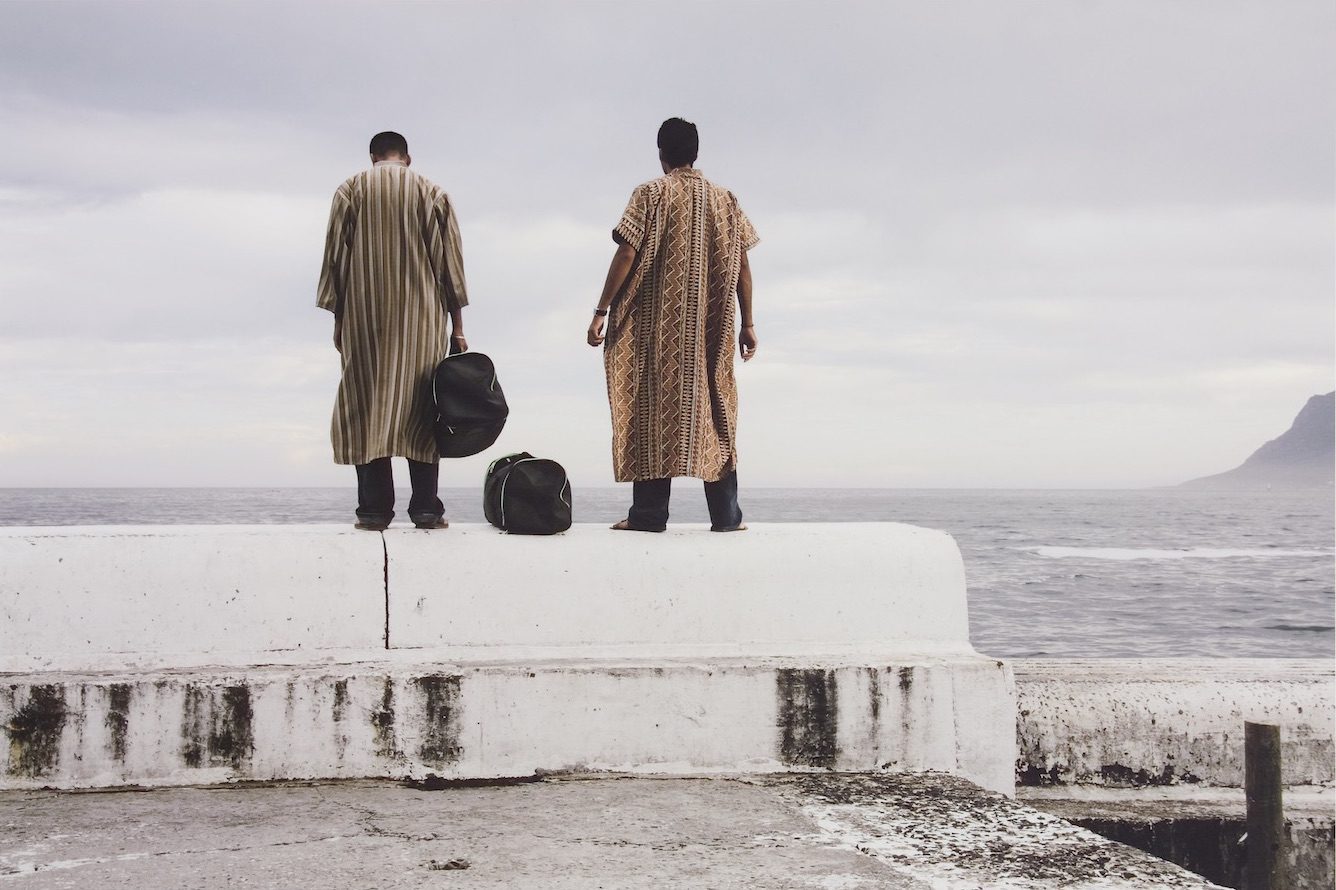Young South-African curator Same Mdluli joined the Standard Bank Gallery as manager in January 2018. Now she talks with C& about visions, goals and responsibility, and her tenacity in negotiating the balance while approaching Black youth and Pan Africansim.

Hasan and Husain Essop, Cape Town (South Africa), Variation, 2009. Pigment print on cotton rag paper. To see in " I am because you are: A search for Ubuntu with permission to dream" at Standard Bank Gallery.
C&: You just took over a new position as Chief Curator and Manager at Standard Bank Gallery. Can you tell us a bit about your journey towards taking that major step?
Same Mdluli: My trajectory is no different from any other young Black female in the arts. I did, however, start studying art from the early age of 15 after my parents enrolled me at the National School of the Arts in Braamfontein, Johannesburg. After matriculating, I completed a B-Tech in Fine Arts at what was then Wits Technikon and now the University of Johannesburg. I worked for the Goodman Gallery in Cape Town for a year. Then, while doing an MA in Arts and Culture Management, I worked as a full-time art teacher at a primary school. Afterwards, the Goodman Gallery offered me a job at their Johannesburg branch. In 2015 I finally left the Goodman Gallery to complete my PhD in Art History at Wits University where I had been lecturing as a sessional lecturer until my Standard Bank appointment.

Andrew Tshabangu, Passage, 2007. Fibre-based print, 46 x 30cm. To see in ” I am because you are: A search for Ubuntu with permission to dream” at Standard Bank Gallery.
C&: Regarding your curatorial practice, it seems that you are not scared of facing structural and institutional problems – concerning race, gender or class. Is this something you particularly feel challenged by now?
SM: Of course I feel challenged by this, I am now working for a corporate entity with a prominent brand and presence in not just the arts but also the financial sector on the continent. This comes with a huge responsibility and will require some tenacity in negotiating the balance between the corporate identity and the role of sponsorship for the arts. What is reassuring is that Standard Bank has somehow managed to successfully find a balance in terms of how it promotes and supports the arts, while also fulfilling a social responsibility to the clientele it serves. In addition, the richness of its collection(s) offers an opportunity to extend the conversation of corporate governance around some of these important socio-political issues beyond the structural constraints of working within a particular framework.

Johannes Masego Segogela, Mandela’s Birthday Party, 1998. Carved and painted wood, 41 x 43 x 28cm. To see in ” I am because you are: A search for Ubuntu with permission to dream” at Standard Bank Gallery.
C&: The first project you worked on at Standard Bank Gallery is I am because you are: A search for Ubuntu with permission to dream. This exhibition deals with aspects of identity and conviviality, among others. Is this a first glimpse into what we can expect from future exhibitions?
SM: Not necessarily, however, the exhibition in many ways encompasses the kind of ethos I would like to apply to each of the forthcoming exhibitions – a sense of Ubuntu and human-ness. At the moment I have identified three key focus areas in terms of my vision and goals for the gallery. The first is the youth, particularly Black youth. I think it is important to attract younger audiences to gallery spaces so as to engage them in important pertinent discussions and dialogues around various issues. The second is a focus on the Standard Bank corporate art and classical African art collection and its potential for research output. This will in the long term be important for how Africa as a continent is shaped by the content that comes from its scholars, writers, and intellectuals. And the third is a direction towards a Pan-African approach toward thinking about the arts; a direction that will place emphasis on how we are all interconnected by being rooted in the continent, being creative and empathetic human beings.

Thami Mnyele, Things Fall Apart 2, 1976. Drawing, 61 x 64.5cm. To see in ” I am because you are: A search for Ubuntu with permission to dream” at Standard Bank Gallery.
C&: How do your experiences as an artist, gallery director, writer, academic, and as a teacher correspond within your curatorial practice?
SM: I think, firstly they come as lessons; mostly lessons in what not to do when engaging with sensitive material and cultural memory. Over the years, the term ‘curator’ has become convoluted with so many meanings that it has lost its true essence. The culmination of these experiences for me have been about finding an authentic voice within a curatorial practice that seeks to employ art, art history and narrative as a form of telling untold stories. Secondly, I believe that as a creative person you are in a sense wired differently. This means that you process the world in a particular way but at the same time there are different points in your creative trajectory where certain practices are more important than others or perhaps articulate an idea better than others.
C&: Could you elaborate on how you see the role of education in the arts as well as in your curatorial and artistic practice?
SM: Education is critical to a broader understanding of the role art plays in shaping society. Visual literacy is an imperative component of this, especially in the advent of social media and the precarious position images occupy within that space. And so for my curatorial and artistic practice, it is important to be cognizant of how images navigate the contemporary tapestry.
By Theresa Sigmund.
More Editorial